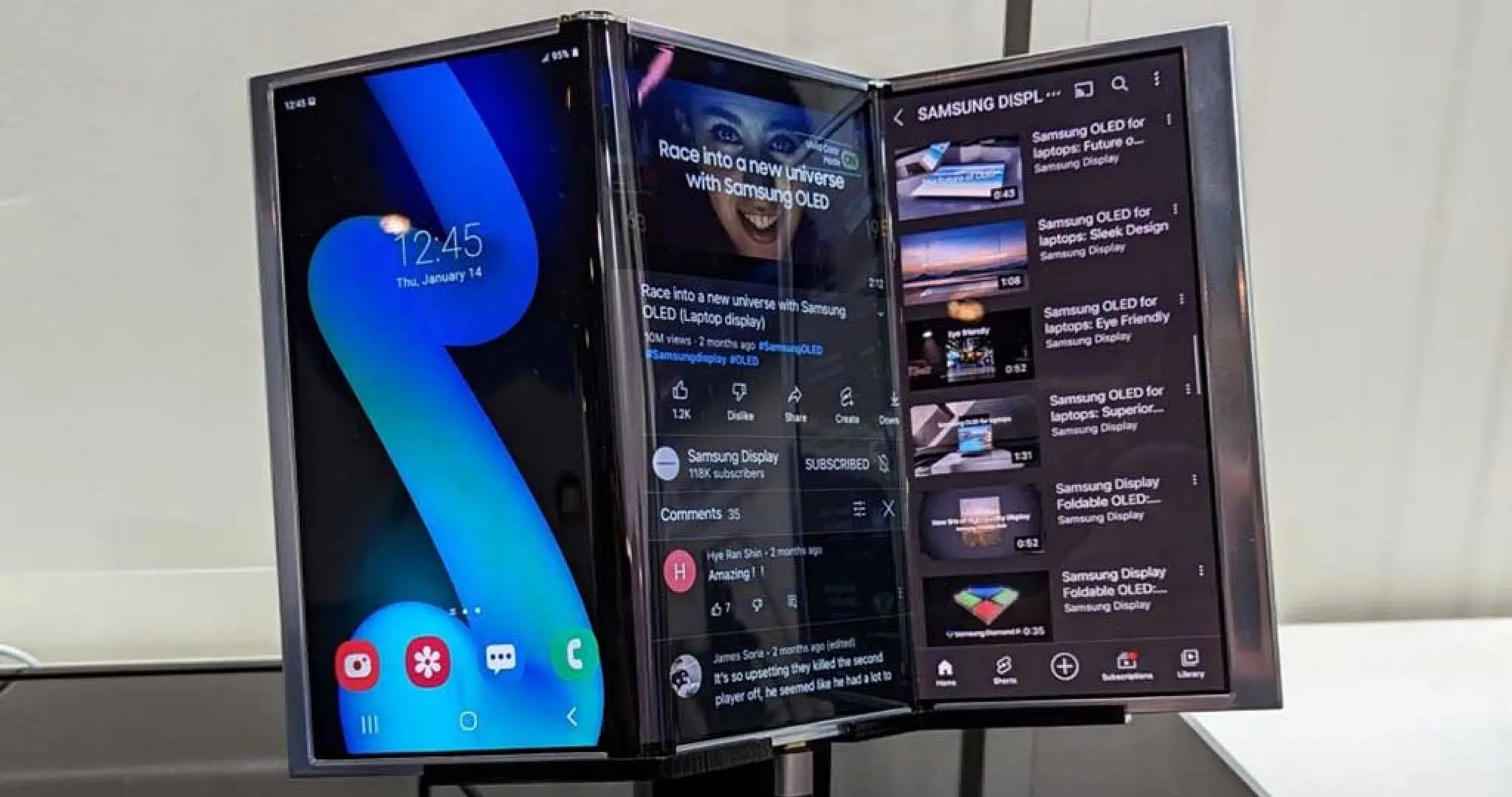Samsung to Unveil Triple-Folding Smartphone, Redefining Mobile Form Factors
Samsung is preparing to launch the world’s first triple-folding smartphone later this year, signaling a new era in foldable technology with increased screen versatility and advanced display engineering.
Samsung Electronics is set to launch its first triple-folding smartphone in 2025, pushing the boundaries of mobile innovation and staking its claim as the undisputed leader in foldable display technology. Industry insiders confirm that the South Korean tech giant is preparing to debut this groundbreaking device during the second half of the year, potentially at its Unpacked event. This triple-foldable device—dubbed internally as the Galaxy Tri-Fold —will expand on Samsung’s existing Galaxy Z Fold and Z Flip lineup by incorporating two hinges and three display panels , allowing the phone to unfold into a full-sized tablet or even larger screen format.
Why It Matters The launch of a tri-fold phone signals a significant leap forward in the mobile industry’s form factor evolution. While dual-fold phones already provide increased screen real estate, a triple-fold introduces even greater versatility—offering a seamless transformation from compact smartphone to expansive tablet to productivity-focused workstation. This move also underscores Samsung's ambition to stay ahead of rivals like Huawei, Honor, and Xiaomi, who have all made recent strides in foldable tech but have yet to commercialize a triple-fold model.
Expected Features and Innovations Though full specifications haven’t been revealed, leaks and patent filings point to several potential features: - 7. 8-inch to 8. 5-inch display when fully unfolded - OLED screen with Ultra Thin Glass (UTG) for durability - Advanced hinge mechanics to ensure long-term folding performance - Multitasking enhancements via One UI updates - S Pen compatibility , positioning the device for professionals - High-end camera system , similar to the Galaxy S24 UltraBattery capacity and weight distribution remain key engineering challenges due to the complexity of the design, but Samsung is reportedly addressing these with new battery cell stacking technology and lighter materials.
Market Strategy and Pricing Samsung is targeting the premium segment, with the device expected to carry a price tag between $1,800 and $2,200 USD. Analysts expect a limited initial release to gauge consumer response and manage production complexity. The company is reportedly focusing its marketing efforts on: - Tech early adopters - Mobile productivity users - Design enthusiasts and luxury gadget buyers Samsung also aims to differentiate this model by positioning it as a laptop replacement alternative for remote professionals and creators.
Industry Reactions Tech analysts are cautiously optimistic. "The tri-fold form factor could redefine how we think about mobile computing—if Samsung nails durability and software integration," said Rahul Arora, a mobile hardware analyst at FutureGaze Research. App developers are watching closely, with new UI frameworks expected to be rolled out to support triple-screen scaling and dynamic layout adaptation.
Competitive Landscape While Chinese OEMs have teased concept tri-folds, Samsung is likely to be the first to mass-produce and commercialize such a device globally. Huawei has a prototype but faces production challenges, and Apple remains absent from the foldable race for now. Samsung’s deep supply chain integration and leadership in OLED panel manufacturing give it a substantial edge.
A Glimpse into the Foldable Future If successful, the Galaxy Tri-Fold could usher in the next wave of post-smartphone form factors, challenging not just phone makers, but tablet and even laptop manufacturers. Samsung’s ambition is not just to dominate foldables, but to redefine mobile computing altogether. Conclusion: Samsung's Next Bold Move Samsung’s upcoming triple-folding smartphone marks a new milestone in the evolution of device design.
As the boundaries between phone, tablet, and laptop blur, the tech giant is betting big on a future where screens fold not once, but twice —offering users unprecedented flexibility, performance, and style. If the device meets expectations, 2025 may become the year that foldables move from experimental to essential.
8th July 2025



